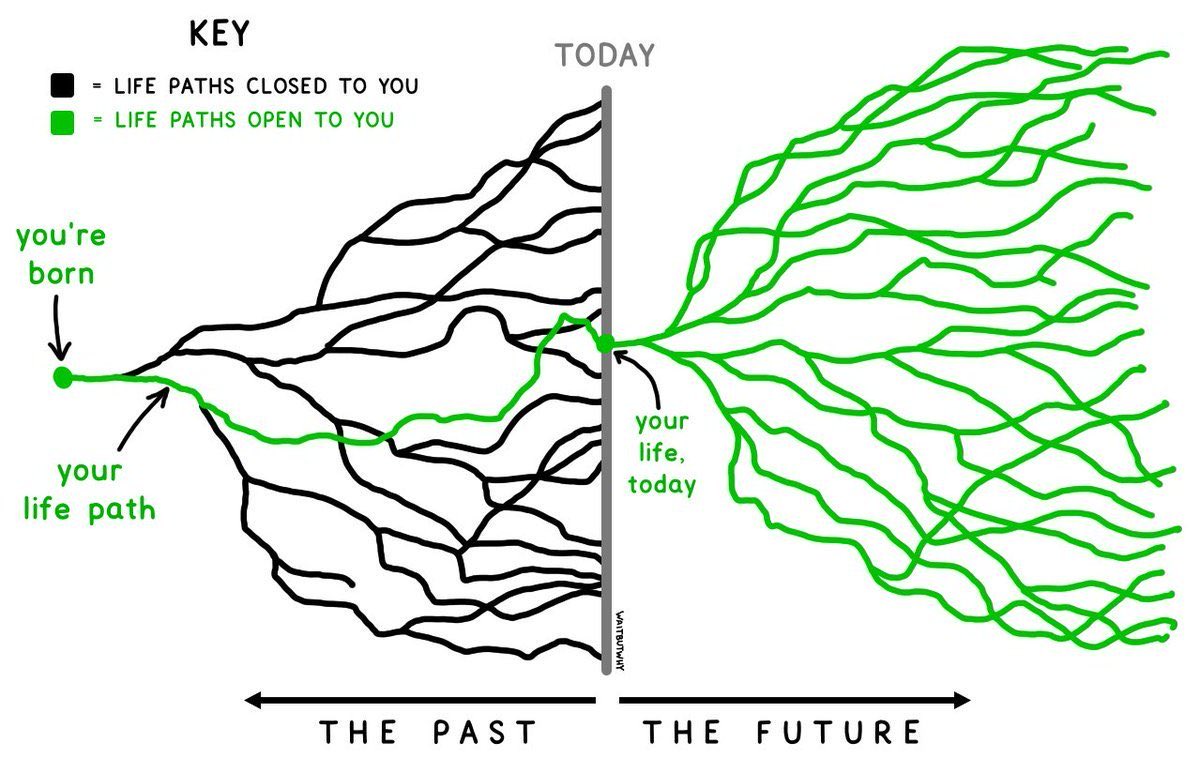Working Identities
Changing careers means changing yourself.

Your identity is not fixed, and it does not reside internally. Instead, you have multiple possible future selves. The only way to discover these selves is by performing experiments that involve interaction with other people.
At first, you will have several small possibilities. As some of them grow, they will begin to push out other identities. This includes your current self.
Why take this approach? Because it removes the paralyzing fear of having "one true career path" for the one true self. It's easier and safer to make these decisions in an iterative fashion, where you can pick up tacit knowledge.
Ultimately, its an act of both questioning and commitment, and balancing the two. Questioning without commitment leads to movement. Commitment without questioning produces an "organization man" who has no identity beyond title and function.
Discovering possible identities
We discover the true possibilities by doing—trying out new activities, reaching out to new groups, finding new role models, and reworking our story as we tell it to those around us. What we want clarifies with experience and validation from others along the way. #action produces information
Learning about your self is a social activity. You see how you react to others. You look at others and ask "Do I want to be like him/her?" Asking yourself this question is another form of test.
Find ways to step back. It's hard to see past the blinders of habit and daily routine when you are immersed in them.
How to test possible identities
- Start to identify possible future selves. Some introspecting and personality testing can be helpful, but don't spend too long on it. These tools are used to form hypothesis, but can't be use to form conclusions.
- Ask "which possible future selves are the most interesting to me? Which are easiest to test?"
- Design tests with a limited scope.
- Observe your successes based on your gut reaction, and the reactions of others.
- Occasionally step back to reflect on what you find, refine your hypothesis, and decide where to go next.
Experiment Examples
- Join a new social club or online community. Observe how their viewpoint, language, demeanor, and outlook.
- Take a course or get additional training
possible identities and socialization
Socializing with people outside your immediate professional world, you are able to gain knowledge and insight about other professional worlds you could not find anywhere else. Different people = different information.
Most job opportunities come from personal connections. To get a job in a new field, you'll need new connections.
If possible find someone who can act as a guiding figure, a boss, a mentor, someone who can help guide you down a new path.
Adopting new identities
New identities will live on the side to start. As they grow ad develope, they begin to crowd out existing identities. During this time, there is an anguished middle period.
As you progress, you tell and re-tell your story.
How do we know which identities make the cut? Our gut (aka emotional reaction) and the people around us.
There will be Resistance from people closest to your. Our spouses, bosses, close friends, and parents - expect us to stay the same, and may pressure us (consciously on unconsciously) to remain consistent. Changing yourself can amount to an implicit breaking of a social contract.
You may find "communities of practice" (maybe one type of squads?), groups working on something and "learning to be".
The 9 unconventional strategies for re-invention
- Act your way into a new way of thinking and being. You cannot discover yourself by introspection.
- Stop trying to find your one true self. Focus your attention on which of your many possible selves you want to test and learn more about.
- Allow yourself a transition period in which it is okay to oscillate between holding on and letting go. Better to live the contradictions than to come to a premature resolution.
- Resist the temptation to start by making a big decision that will change everything in one fell swoop. Use a strategy of small wins, in which incremental gains lead you to more profound changes in the basic assumptions that define your work and life. Accept the crooked path.
- Identify projects that can help you get a feel for a new line of work or style of working. Try to do these as extracurricular activities or parallel paths so that you can experiment seriously without making a commitment.
- Don't just focus on the work. Find people who are what you want to be and who can provide support for the transition. But don't expect to find them in your same old social circles.
- Don't wait for a cataclysmic moment when the truth is revealed. Use everyday occurrences to find meaning in the changes you are going through. Practice telling and retelling your story. Over time, it will clarify.
- Step back. But not for too long.
- Change happens in bursts and starts. There are times when you are open to big change and times when you are not. Seize opportunities.